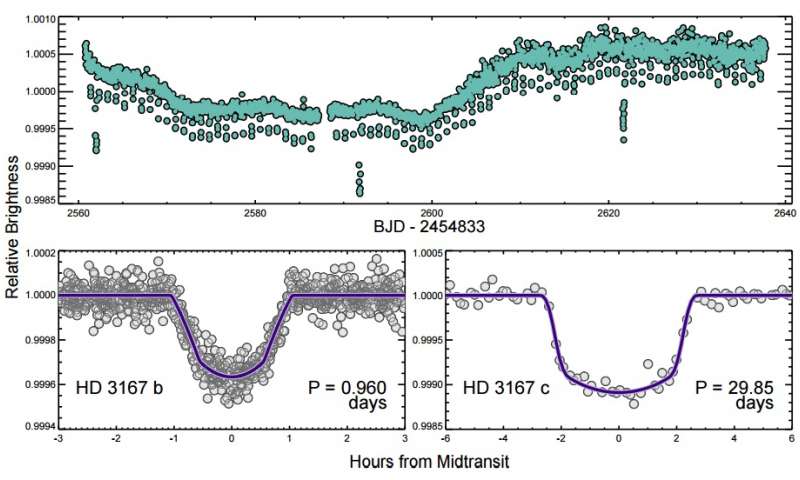Two super-Earth-sized planets were discovered by NASA’s Kepler spacecraft orbiting a nearby sun-sized star known as HD 3167, located 150 light years away.

While Kepler lost two of its four reaction wheels, it is still able to detect new exoplanets. The spacecraft is currently in its extended mission, known as K2, which has already discovered over 100 new planets.
The HD 3167 was observed between January 3 and March 23, 2016, during Campaign 8 of its K2 mission and is one of the latest additions to the collection of extrasolar worlds detected by K2. The observation of the star allowed a team of astronomers, led by Andrew Vanderberg of the Harvard–Smithsonian Center for Astrophysics (CfA), to discover two transit signals, a result of planets circling the nearby star.
“We identified two planet candidates transiting HD 3167 after processing pixel-level data to produce a light curve, removing systematic effects due to Kepler's unstable pointing, and searching for planets using a Box Least Squares periodogram search,” the researchers wrote.
To confirm the planets, the team did follow-up observations using the Tillinghast Reflector Echelle Spectrograph (TRES) on the 1.5 m telescope at the Fred L. Whipple Observatory on Mt. Hopkins, Arizona, as well as with the Robo-AO optics system installed at the 2.1 m telescope. Additionally, the astronomers used statistical techniques to confirm the planetary nature of the transiting signals.
The confirmed exoplanets were deemed HD 3167 b and HD 3167 c. HD 3167 b has a radius of approximately 1.6 that of Earth’s radii and is the inner planet that orbits the host star in slightly less than one day. The outer planet, HD 3167 c, is nearly three times larger in size than Earth and has an orbital period of 30 days.
The scientists may conduct an even further follow-up observation of HD 3167 as it is one of the closest and brightest stars hosting multiple transiting planets. They noted that the system is beneficial for precise radial velocity observations to measure the planets’ masses.
The full report of the team’s findings can be found here.
Source: Phys.org
Advertisement
Learn more about Electronic Products Magazine





